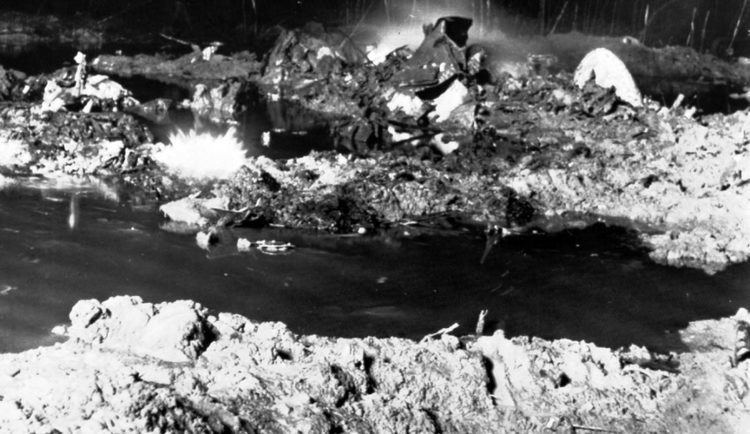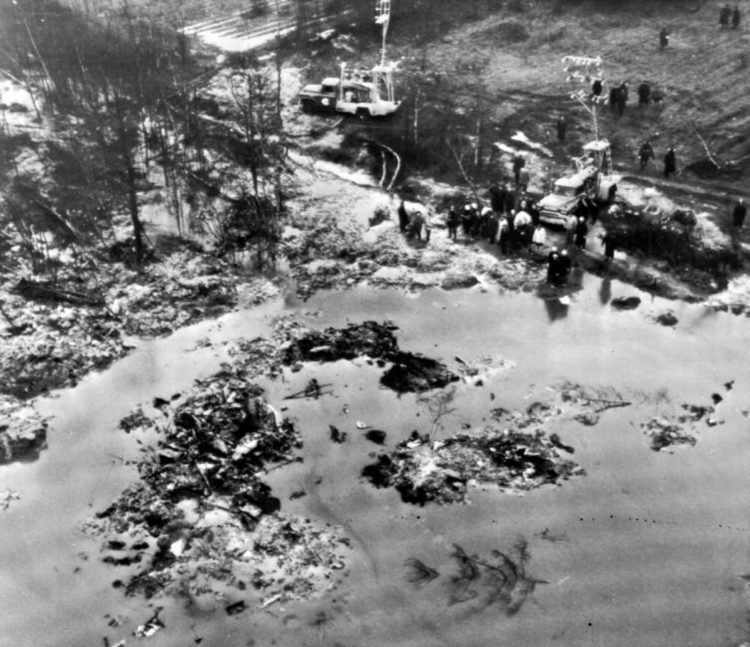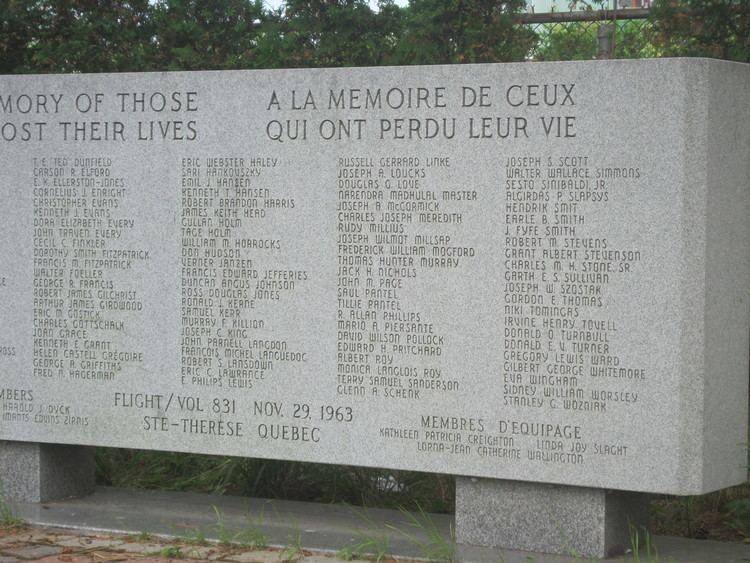Passengers 111 Injuries (non-fatal) 0 Date 29 November 1963 Fatalities 118 (all) Passenger count 111 | Crew 7 Survivors 0 Survivor 0 | |
 | ||
Summary Unknown; possible systems failure Destination Toronto Pearson International Airport Similar Swissair Flight 306, Pan Am Flight 214, Northwest Airlines Flight 705, Air Canada Flight 621, United Arab Airlines Fl | ||
Trans-Canada Air Lines (TCA) Flight 831 was a flight from Montréal–Dorval Airport (now Montréal-Trudeau) to Toronto International Airport (now Toronto-Pearson) on November 29, 1963. The aircraft was a four-engine Douglas DC-8-54CF airliner, registered CF-TJN. About five minutes after takeoff in poor weather, the jet crashed about 20 miles (32 km) north of Montreal, near Ste-Thérèse-de-Blainville, Quebec, Canada, killing all 118 people on board: 111 passengers and 7 crew members. The crash was the deadliest in Canadian history at that time, and is, as of 2016, the third-deadliest in Canada behind Swissair Flight 111 and Arrow Air Flight 1285. It was also the worst crash of DC-8 at the time, and, as of 2016, the sixth worst.
Contents

Sequence of events

At 6:28 P.M., the DC-8 began its takeoff roll on Dorval airport's runway 06R. The crew reported back when they reached 3,000 feet (910 m) and were given clearance for a left turn. It was shortly after the clearance was given that the aircraft deviated from its expected flight path, and began a quick descent. At about 6:33 P.M. the jet struck the ground at an estimated 470–485 knots (870–898 km/h) while descending at about a 55-degree angle (± 7 degrees).

The aircraft had plunged into a soggy field, in Sainte-Thérèse, Quebec, about 100 metres from the main highway that leads to the Laurentian Mountains. One witness said she saw what looked like "a long red streak in the sky" just before the crash. The red-trimmed, silver jet dug a crater 6 feet (1.8 m) deep and 150 feet (46 m) wide in the ground that soon began to fill with rainwater. Although parts of the plane were scattered over a wide area, the aircraft had broken into two main sections when it struck the ground.
Emergency response

The site of the crash was a flat field away from houses in the town of 12,000 people. The main sections of the wreckage lay about halfway between Highway 11, now Quebec Route 117, and the Laurentian Autoroute (Quebec Highway 15). Rescue parties were hampered by deep mud around the wreckage, and by a fuel-fed fire that lasted for hours despite heavy rain.
Investigation

The plane was too badly damaged to determine a definite cause. Canadian aircraft were not required to carry voice cockpit recorders or flight data recorders at this point, complicating the investigation into the crash of TCA Flight 831. The official report released in 1965 pointed to problems in the jet's pitch trim system (the device that maintains a set nose-up or -down attitude) as a possibility, since a pitch trim problem caused the similar crash of Eastern Air Lines Flight 304, another DC-8, three months later in 1964. Other possible causes were put forward that could not be ruled out: 1) Icing of the pitot system; and 2) Failure of the vertical gyro.
Notable victims
The crash killed all 118 people on board: 111 passengers and seven crew members. 76 victims were from the Metropolitan Toronto area, while three victims were foreign nationals: two from the United States of America, and one from India. A TCA official was quoted as saying that "the bodies were so badly smashed that identification was virtually hopeless." The plane's flight crew included World War II bomber pilot Captain John (Jack) D. Snider, 47 years old, of Toronto; First Officer Harry J. Dyck, 35, of Leamington, Ontario; and Second Officer Edward D. Baxter, 29, of Toronto.
Police officers Sergeant John Bassett and Detective Kenneth Evans were on board, as was Donald Turnbull, son of inventor Wallace Rupert Turnbull. Also killed was Charles Stone of Montreal, a former co-owner of the Canadian Football League's (CFL) Montreal Alouettes; his death occurred during the CFL's Grey Cup week in Vancouver. The casualty count could have been higher. Traffic congestion on Montreal's main expressway caused eight people to miss this flight. The traffic congestion, which extended all the way into the downtown core, also delayed emergency vehicles from getting to the crash-site.
Among those on the flight were Donald Hudson and John Langdon, both from the Canadian Broadcasting Corporation (CBC). Hudson was a television producer for Toronto, and Langdon, a London native, was Assistant Director of TV Operations in Toronto. They had been in Montreal preparing a bilingual television variety show called A Show from Two Cities. As a consequence, the CBC public affairs series This Hour Has Seven Days began filming the aftermath, and the investigations into the crash. In November 1965 they broadcast their hour-long documentary. It was watched by over two million Canadians but it appears that families directly affected avoided it, not wanting to revisit their tragedy.
TCA, the predecessor to Air Canada, created a memorial garden near the site of the crash. The memorial is located at the Cimetière de Sainte-Thérèse. The crash site is now within a residential neighbourhood.
Though it is customary for airlines to retire a flight number after a major incident, Air Canada continues to use flight number 831 for a different route. Flight 831 originates in Geneva and terminates in Toronto with a stopover in Montreal.
